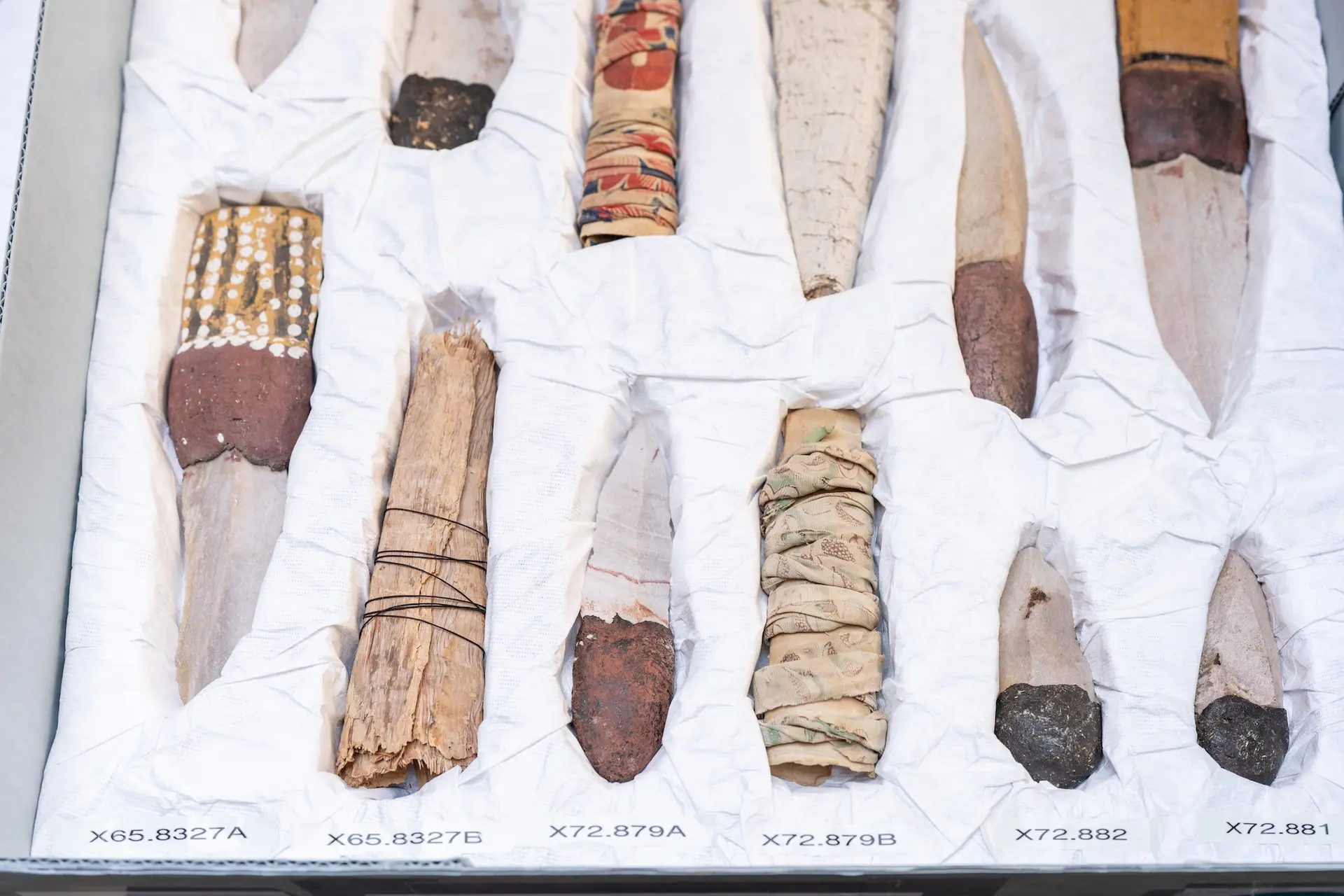Los Angeles museum returns artefacts to NT First Nations community
Returned objects displayed at the repatriation ceremony at the Fowler Museum at UCLA Photo: David Esquivel/UCLA
VOCABULARY LIST
Repatriation (noun) /ˌripætriˈeɪʃən/: The process of returning someone or something to their own country.
Example: The museum is involved in the repatriation of Indigenous artefacts to their original communities.
Handover (noun) /ˈhændoʊvə/: The act of giving control or possession of something to someone else.
Example: The handover of the artefacts was marked by an official ceremony.
Artefact (noun) /ˈɑtəfækt/: An object made by a human being, often of historical or cultural interest.
Example: The museum returned several ancient artefacts to the Warumungu people.
Ceremony (noun) /ˈsɛrəməni/: A formal event or ritual, often with specific customs or traditions.
Example: The ceremony included speeches and the signing of important documents.
Sacred (adjective) /ˈseɪkrəd/: Regarded with great respect and reverence, often related to religion or spirituality.
Example: Some of the returned items are considered sacred and are not to be put on display.
Cultural centre (noun) /ˈkʌltʃərəl ˈsɛntə/: A place where cultural activities and events are organised, often to promote heritage and traditions.
Example: The artefacts will be displayed in the community cultural centre.
Expand (verb) /əkˈspænd/: To increase in size, scope, or amount.
Example: The Nyinkka Nyunyu Arts and Culture Centre is undergoing a major expansion.
Legacy (noun) /ˈlɛɡəsi/: Something handed down from the past, often related to achievements or cultural heritage.
Example: Preserving cultural artefacts helps to continue the legacy of past generations.
Provenance (noun) /ˈprɒvənəns/: The origin or history of ownership of an object, especially one of historical or artistic value.
Example: The museum investigated the provenance of its collection to ensure its legitimacy.
Strapped (adjective) /stræpt/: In a situation where one has limited resources, often financial.
Example: The museum is strapped for cash but still committed to returning the artefacts.
ARTICLE
On 24th July, the Fowler Museum at the University of California, Los Angeles returned 20 objects to the Warumungu people from Australia's Northern Territory. The handover happened at an official event attended by university officials, two Warumungu elders, and staff from the Australian Institute of Aboriginal and Torres Strait Islander Studies (AIATSIS)—a government organisation dedicated to finding and returning Indigenous artefacts from around the world.
The ceremony included speeches, document signings, and group photos in the museum courtyard. The repatriated objects, including a wartilykirri (a hooked boomerang) used for various purposes like hunting and percussion, were carefully packed in boxes. Also included were knives, wooden clubs, and other items, each about a century old.
Silvia Forni, the Fowler’s director, explained that the case for repatriation was strong. Some items are sacred and shouldn't be displayed, while others hold significant cultural importance for the community. AIATSIS supported the return, emphasising how these objects preserve ancestral knowledge and will be cherished in the community cultural centre.
The objects will first go to AIATSIS headquarters in Canberra and then to the Nyinkka Nyunyu Arts and Culture Centre in Tennant Creek, after AIATSIS completes its A$7m ($4.6m) expansion project later this year.
Cliff Plummer Jabarula, a Warumungu elder, stressed the importance of preserving culture, especially after losing many elders who hold essential knowledge. He emphasised the continuation of their legacy through cultural practices.
AIATSIS launched the Return of Cultural Heritage (RoCH) programme six years ago to identify and return Indigenous artefacts held in collections worldwide. The programme has engaged with numerous institutions, with positive responses from many willing to repatriate items. The Fowler Museum, an early participant, identified and confirmed the Warumungu objects last year from its Australian Aboriginal collection, some originally acquired through uncertain means.
The Australian government covers major costs of repatriation, easing the financial burden on museums. Despite progress, Jason Lyons from RoCH expects a long process ahead, with much more work needed to return artefacts to their rightful communities.
SOURCE:
This article is based on: https://www.theartnewspaper.com/2024/07/29/fowler-museum-returns-objects-warumungu-people-australia


